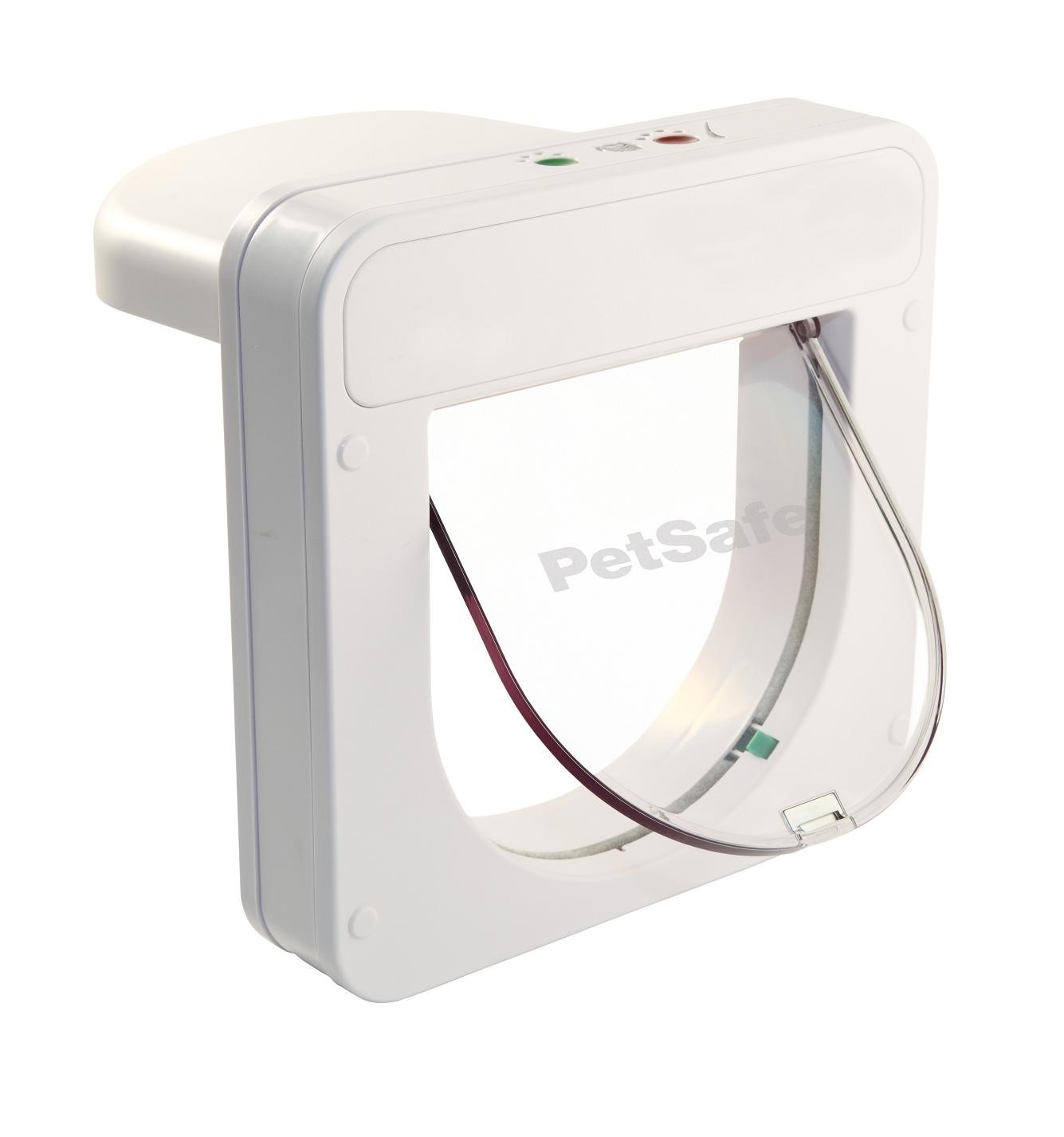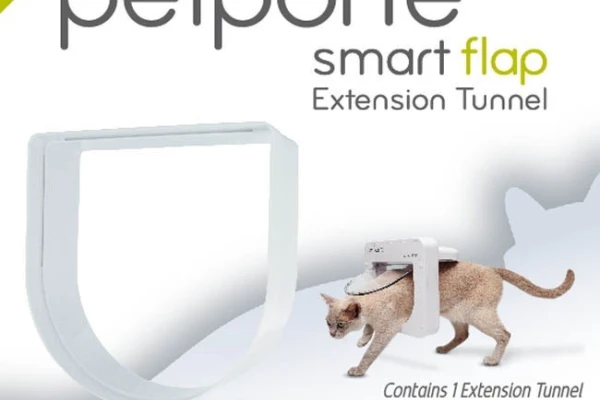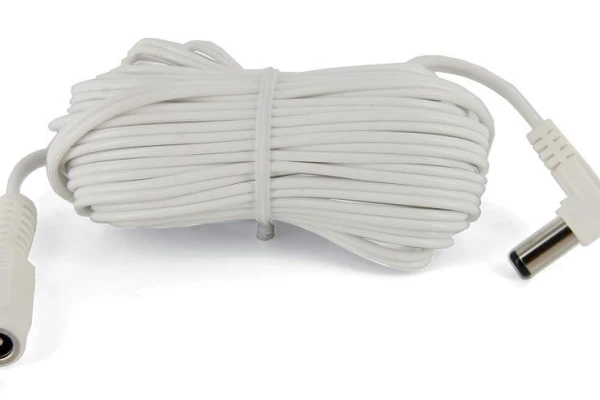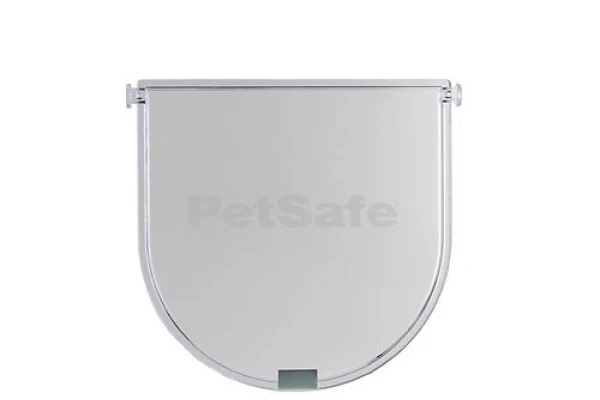Microchip Petsafe Petporte Smart Flap
Microchip Petsafe Petporte Smart Flap
PetPorte Cat Flaps
100ML
Help keep out unwanted cats with the award winning Microchip Petporte Smart Flap® cat flap.
Help keep out unwanted cats with the award winning Microchip Petporte Smart Flap® cat flap.
Your Smart Flap
Your Petporte Smart Flap is a natural development of the original Petporte Microchip cat flap and has been designed to allow your animals easy access to the outside world whilst keeping other troublesome cats out of your house.
- No collar needed.
You will find the number in your microchip registration form which will have been issued to you by your Vet.
Please note that chips with 10 digits, lettered characters in them, and chip numbers starting with 977xxxxxxxxxxxx are not currently compatible with Petporte cat flaps. Chip numbers 98514xxxxxxxxxx will work with the Petporte, but may have a much reduced sensing range.
Key features:
- Helps keeps out unwanted cats.
Strong door and locking mechanism.
- Fits common glass and door cat flap openings.
Easily fits common 17cm square openings or 21cm diameter holes.
- Automatically detects light levels.
With most road traffic accidents occuring at night, you have the option to keep your cat indoors during hours of darkness.
- Optional battery backup.
In the case of a power failure an optional PP3 backup battery ensures that the cat flap won`t fail.
- A vet mode allows you to keep your cat indoors.
Sick cats can be kept in until fully recovered.
- Optional audible beep on entry.
Lets you know when your cats are home.
- Improved weather-proofing.
A magnetic latch and combined draught excluder helps keep the weather outside.
- Two button operation.
A simple interface to control the cat flap`s features.
- Programmable for up to 25 of your cats.
REALLY cat mad? No problem!
- Intelligent memory system.
Cat`s microchips are remembered even after a power cut.
- Works with UK & European 15 digit microchips.
Check out our microchip compatibility checker for your cat`s chip.
- Low voltage power supply.
No batteries to replace so your cat can always come back inside.
Greater read-range and reliability.
ACCESSORIES
• Petporte® Smart Michrochip Replacement Flap
• Petporte® Extension Lead - 5 Metre
• Petporte® Extension Tunnel- White
Frequently Asked Questions
- 1. What does this cat flap give us that other cat flaps do not?
- Unlike other cat flaps, the Petporte Smart Flap does not require your pet to wear an access device suspended from its collar, for example a magnet or infrared transmitter. The Petporte Smart Flap recognizes the normal microchip implanted under your pet`s skin, thus allowing it entry; therefore it does not require the use of a collar or accessory.
In addition, the Smart Flap has the facility of an optional automatic twilight lock-down that prevents pets from going outside once the light level starts to reduce. Statistically, most road traffic accidents and cat fights occur at night so, by using this facility, it will help to prevent your pet being injured.
The scanner coil is housed in a unique canopy on the outside of the unit. This enables you cat to be detected and for the flap to be unlocked before it reaches it. The canopy also provides some weather proofing for the door and some protection for you cat when exiting from other cats.
Another advantage of moving the scanner away from the door is that it is less likely to be affected by any metal within the materials of the door. There is often a metal security sheet within UPVC doors that could interfear with the scanning process but this is less likely with the Smart Flap because the scanner coil is suspended away from the door. No cover is required on the underside of the canopy to enclose the scanner coil. - 2. Does my pet have to be microchipped for the Petporte Smart Flap to work?
- Yes. Your pet must be microchipped for the Petporte cat flap to be able to recognise each individual animal. The Petporte will not allow any microchipped animal access, only those that have been programmed in.
- 3. How can I tell if my pet`s microchip will work with the cat flap?
- The Petporte cat flap will read all fifteen-digit microchips; these are the microchips that are used in the UK and throughout Europe. It will not read the ten-digit American microchips. If you would like to ensure that your pet`s number will work, try our microchip checker and enter the microchip number.
Please note that chip numbers 985140xxxxxxxxx and 977200xxxxxxxxx will work with the Petporte but may have a much reduced detection (sensing) range. - 4. Does it matter where my pet is microchipped?
- There are international conventions indicating where different species should be microchipped. Dogs and cats should be microchipped in the scruff of their necks. As your pet then attempts to access the Petporte, its microchip passes under the scanner housed within the porch, allowing the chip to be recognized.
- 5. Can the implanting of a microchip harm my pet?
- Microchipping has no known harmful effects in dogs. In cats there is a theoretical risk associated with any injection. Statistics show that 1 in 10,000 cats that have an injection is at risk of developing an injection-site tumour. However, this is very rare and is certainly no reason to stop vaccinating or microchipping your cat because, generally, the risks are outweighed by the protection that is provided.
- 6. Do we have to send you the microchip number?
- No, you do not need to send us your pet`s microchip number. You should check that the Petporte can detect your cat`s microchip before fitting it to your door or wall. Simply assemble the Petporte as instructed and plug it in. Then press the green paw button for ten seconds before passing the scanner over your cat at the distance that your cat will approach the cat flap when fitted. Once detected your cat will have been programmed in. For each animal that is to use the cat flap, repeat the procedure. It`s that simple!
- 7. My cat already has a collar - does this matter?
- No, for the Petporte cat flap it does not matter if your pet wears a collar or not; it is the under-skin microchip that is recognised and not the collar. Whilst Petporte Limited advertises that no collar is needed, we do not suggest that pets should not wear a collar. There are many instances where a collar is desirable, for example high-visibility collars, special-diet instruction collars to name but a few.
- 8. Does the original Petporte cat flap work on batteries?
- Yes, the Smart Flap can be powered by either batteries, low voltage power supply or a combination of the two. For operation of all functions and the quickest response to your cat we recommend you use the low voltage power supply because the unit is scanning constantly. This can be backed up with battery power and in the event of a power cut the basic functions of the Smart Flap will be retained.
- 9. What functions work with the Smart Flap on battery only mode?
- If you want to power your Smart Flap by battery alone the selective entry function will be unaffected but some of the more complex functions will not be possible. In particular night mode will no longer function due to the nature of constantly monitoring light levels. Also, the Smart Flap will not be able to function with the forthcoming selective exit and computer control accessories. The response time to your cat will be a little extended because it has to push against the flap to activate the scanner which in turn means the Smart Flap cannot run on batteries if fitted to a wall as your pet will have passed the scanner before it pushes the flap to activate it.
- 10. What type of battery does the Smart Flap require?
- The Smart Flap requires a PP3 9V battery similar to those found in most home smoke alarms. To get the best continual use out of the battery we recommend the use of a Lithium based battery, as these offer far superior battery life.
- 11. How do I fit / change the battery in the Smart Flap?
- To access the battery compartment use a "slot ended" or straight screw driver to gently lift the battery cover plate with the writing "Petporte Smart Flap" above the opening on the indoor section of the unit.
- 12. How long will the battery last for?
- Under normal circumstances and operation the battery should last 6 months but this will vary depending on the traffic through the flap! When the battery power levels are low and the battery needs replacing the green light will illuminate and the red light will flash intermittently.
- 13. What if I wish to run the Smart Flap on low voltage power and my nearest power socket is too far away?
- The Petporte cat flap comes with a 1.8-metre power lead which is often sufficient to reach the nearest power socket. If, however, your power socket is further away, then we do sell 5-metre extension leads which are compatible with the cat flap - see the online shop pages for more information and to purchase extensions.
- 14. What happens if there is a power cut?
- The basic programmed functions of your Smart Flap will continue to operate during a power cut if you have fitted a battery into the unit. The response time to your cat will be slightly extended because the cat has to activate the scanner by pushing on the door.
- 15. If there is a power cut, do I have to re-program in all my pets again?
- No, once your pets have been programmed in, you will not need to repeat the procedure, even in the event of a power failure.
- 16. Is the Petporte weather-resistant?
- The Smart Flap has been designed and constructed to resist the adverse effects of weather. To clean your Petporte simply wipe the unit with a with a damp cloth, please do not power wash the unit. (Please ensure that you do not use too much water on the damp cloth!)
- 17. Can the Petporte be fitted into glass doors and double-glazed units?
- To simplify the fitting of the Smart Flap into windows, double or single glazed, it has been designed to fit into a circular cut out of 212mm diameter. The installation would need to be done by a qualified tradesman who has the equipment to cut holes in glass.
- 18. Can the cat flap be fitted into solid and cavity walls?
- Yes, but you must use a "wall model" which has a longer wire between the indoor and outdoor sections, the door versions have about 12cms of wire, whereas the wall-mounted models have about 33cm of wire.We do not provide wall fixing screws because the type needed will vary greatly depending on the wall construction. Various fixing types are available depending on the wall`s construction: chemifix bolts and nuts, screws fixed into inter-set or plastic rawl plugs, nylon self drill or polytoggle.
An opening must be formed in the wall at the appropriate height for your cat to be scanned, based on the rectangular template provided. The opening should be formed by a qualified builder avoiding utility supplies and not damaging the integrity of buildings damp proof courses.
The principle difference between fitting the Smart Flap through a wall and a door is the method of fixing the indoor and outdoor sections to the walls.
To fix the indoor section to the wall utilise the four 5mm diameter holes in the corners of the interior section that are accessible with the front cover removed.
To fix the outdoor section to the wall utilise the two 6mm diameter holes in the sides of the exterior frame that support the canopy
The Smart Flap comes with a single tunnel section that provides 52mm length. Extra tunnel extensions can be purchased (see our shop page) with each providing 40mm additional length. These are not provided with wall models because wall thicknesses vary and some people prefer to form their own tunnels using marine grade plywood.
Some people choose to dispense with the canopy and place the scanner coil on top of a tunnel liner by creating an additional space within the wall void to accommodate it. - 19. What do I need to fit the Petporte cat flap?
- The Smart Flap is designed to be fitted to a door up to 52mm thick. Larger thicknesses can be accommodated by using extension tunnels or a suitable liner. The hole for the Smart Flap cat flap needs to be square of 168mm by 168mm or a circle of 212mm diameter. We suggest that the hole should be towards the bottom of the door in order to make it easier for your pet to enter and exit. Ideally, there needs to be an electrical socket within 1.8 metres of the cat flap but, if extension leads are required, then these can be purchased from our shop page. The cat flap should be installed by someone who is competent with a saw (a jigsaw ideally) and, of course, the obligatory screwdriver!
- 20. If an intruding cat is also microchipped, will it be allowed access?
- No, only your pets that are microchipped and programmed into the cat flap will be allowed access.
- 21. Can the Petporte allow some of my pets into my home but keep others out?
- Yes, simply do not program in the animals that you do not want to enter your home; they will then not be recognized by the cat flap and, consequently, they will be locked out.
- 22. If I have several cats, how many can I program into the Petporte unit?
- You can program the cat flap with up to thirty one pets.
- 23. How long after programming in one cat can we program in another cat?
- Once the unit has been programmed with one cat, you can immediately repeat the procedure with another pet.
- 24. How much time does my pet have to enter once the Petporte has recognised it?
- Because the Petporte unit scans constantly for microchips, your pet will be recognised once it moves beneath the porch. The cat flap will then unlock the door and keep it open for four seconds after your pet has left the area beneath the porch. After that time the door will be locked again.
- 25. Can I control my cats going out through the cat flap as well as controlling them coming in?
- The Smart Flap has a "night mode" operation that can keep all your cats in during the hours of darkness. You can select to enable or exit this function and the light intensity at which it is enabled can be adjusted. See the User Guide.In the near future a selective exit kit will be released. This optional extra enables you to control which of your cats are allowed out side and at what time of day!
- 26. If my cat is being chased home by an aggressor, will the aggressor be prevented from entering?
- Yes, provided that the aggressor is four seconds behind your pet.
- 27. Can I adjust the time it takes for the cat flap to lock after my cat has entered to try and stop aggressors following my cat in?
- The time that the lock is open once your cat has been detected is set at a default of 4s. However this can be adjusted to suite you cat and its circumstances. The open time can be adjusted from 1 to 26s. The longer time is ideal for older cats who move slowly and the shorter time is ideal for cats who are being followed in through the flap by an uninvited intruder. What we call "truck and trailer"! See the User Guide for more information.
- 28. Can I lock the cat flap to keep my animals inside so that I can take them to the vet?
- Yes, just simply press the red paw button for five seconds and the cat flap will lock to prevent any animal from going out. We call this "Vet Mode".
- 29. Can I disable the night mode to allow my cats to go in and out freely at any time?
- Yes, this feature is optional and can be turned on or off by simply pressing the red paw button for one second.
- 30. Can I adjust the level of light it takes for my cat flap to lock and unlock when in night mode?
- Yes, this operation needs to be carried out in the morning (sorry if it`s in the summer!) when the light is enough that you want your cat to go outside. Please see the User Guide for instructions on how to change the light level.
- 31. Can I hold the flap open with string?
- Some people hold their cat flap open with string to allow their cats to move without restriction through the cat flap. If the cat flap is always open then the Petporte unit will not be able to offer restricted access to your pets only. However, this is useful to train your cat to use the cat flap.
- 32. What if the Petporte can`t recognise my pet`s microchip?
- This could occur for two reasons: the microchip could have migrated beyond the scanning range of the Petporte cat flap or the microchip could have failed / is of the wrong type (please see question 3 for checking which types will work). The easiest way in which to check exactly where a microchip is located in your pet, or to check if it is working at all, is to take your pet to your local veterinary surgery where the animal can be scanned with their reader. If the microchip has failed, or is not present, then you can ask your vet to insert a new one. Microchip migration and failure is relatively rare with modern microchips as they are specifically designed to be reliable and are coated with a sticky substance to minimize migration. However, ask your vet for more information on this subject.Before you fit the cat flap to your door, we recommend that you test the cat flap out with your cat to ensure that the unit can read your pet`s microchip correctly.
When doing this, the easiest method is to hold the cat flap upside down and move the top of the porch over the cat`s back until the unit reads the microchip. When scanning the cat please do NOT hold the porch itself or touch the wires leading from the porch as this will reduce the the read-range of the unit to a point where it may no longer read the microchip. Also, when fitting the cat flap to your door, please note that it is important to position the cat flap as low as possible on the door in order to minimize the distance between the porch and your pet`s microchip. - 33. Does the Petporte have to be fitted to an external door?
- No, the Petporte unit can easily be fitted to a pet crate or an internal door to control access to the area within. This can be very useful in a multiple-pet household where one or two individual animals are on special or prescription foods. This system has many possible uses, creating special enclaves within a home for certain individual animals, be they nursing mothers or just older pets that need some freedom from young whippersnappers!
- 34. How do I train my cat to use my Petporte?
- All selective entry cat flaps have a locking mechanism that is activated or inactivated depending if the cat attempting to enter is authorised or not. This lock action is likely to make a noise that could "scare" some cats so, to start with we recommend that this is inactivated. In the case of Petporte cat flaps there is an audible "beep" that would need to be inactivated as well as the locks.
To inactivate the locks you need to set the cat flap in "open mode" and then de-activate the beep ("silent mode") as indicated in the User Guide.
Next you need to physically hold the flap open. This is most simply achieved by pushing the flap in, using electrical tape to secure string to it then attaching the string to the door handle. This will keep the flap open and provide the simplest of routes into the house. Unfortunately it will allow every other neighbour-hood cat in to your house but this is no worse than having the flap swing freely. From the cats point of view the action of pushing the flap open may be an issue. This is often the case where a "sensitive" cat has previously attempted to gain access through a flap unsuccessfully. It is difficult to say why but they seem to be keen not to "humiliate" themselves by repeating what was an unsuccessful effort.
Once your cat has been through a few times you can start to lengthen the string so the flap is still open but they have to lift it a little as they walk through it. If this is successful lengthen the string further so they have lift the flap a little further. This will give your cat the sensation of pressure from the flap resting on their neck, back and tail as your cat passes through the opening. The Petporte Smart Flap canopy on the outside will help to prevent rain from entering the open aperture!
One your cat is at ease with using the cat flap you can stage the introduction of the locking mechanism by turning off open mode (simply repeat the steps to put the Petporte Smart Flap in to open mode) and finally the audible beep (again by repeating the process used to de-activate it in the first instance).
Another feature of the Petporte flaps that encourages cats to use them is their crystal clear transparency. This allows the cats to check the area the other side of the flap before they pass through it. This reassures the cat because it can check to see if there are unfriendly cats the other side of the flap before passing through the door.








